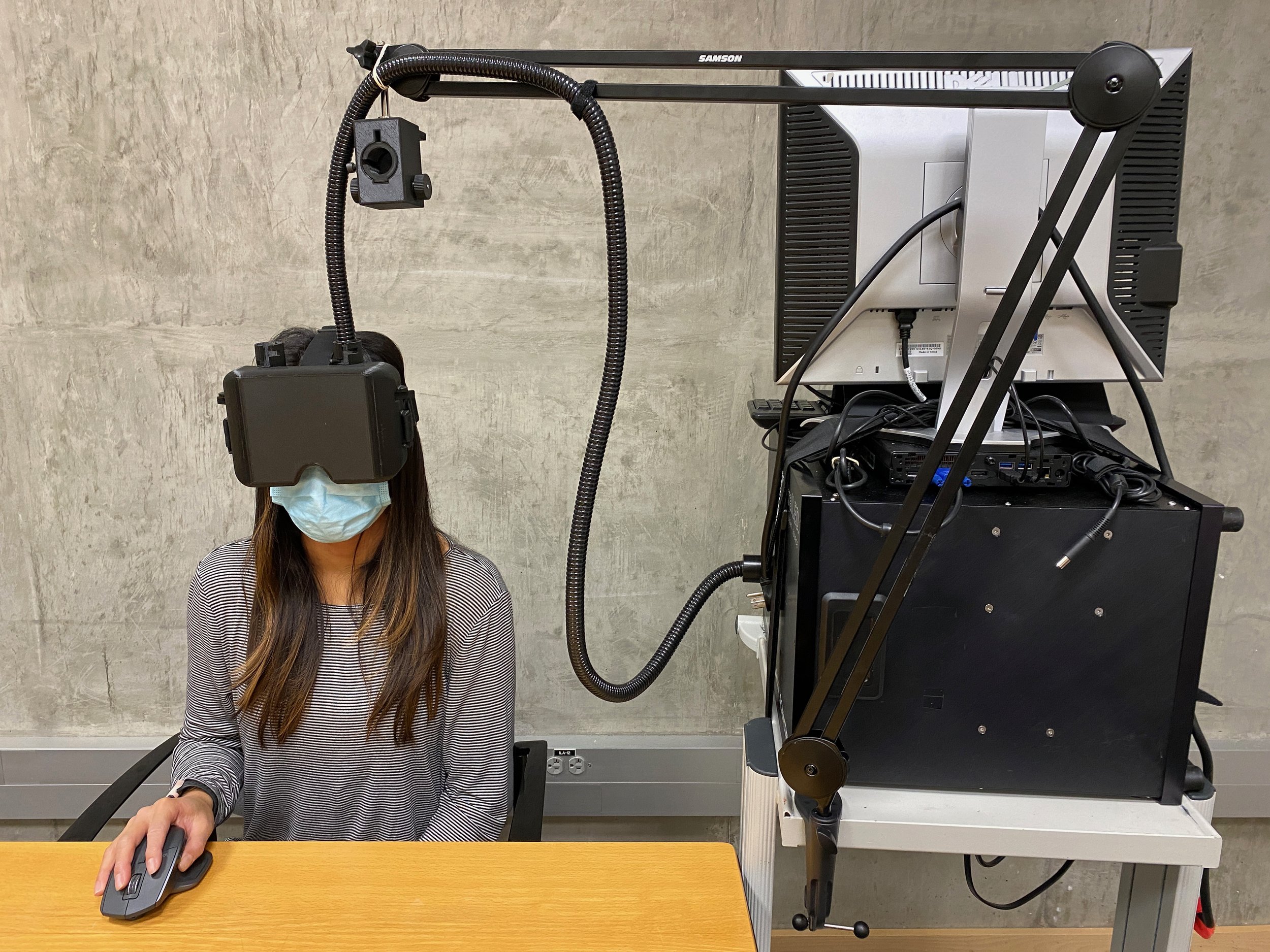
Testing Human Vision Threshold: A Custom-Built Device for Dim Light Sensitivity
Designing and building a device to evaluate the minimum scotopic threshold of human vision.
EXPLORE THE PROJECT
We wanted to develop a modular device that can help us answer the question: How does the visual sensitivity of a human with an RPE-65 gene malfunction compare with a healthy human?
Design an ergonomic human interface device that uniformly illuminates the entire field of view of a human retina in primary gaze
Utilize the RS-7 Gamma Scientific multispectral LED light source
Develop a graphical user interface to control the multispectral light source
Create a testing algorithm to reliably and accurately measure the minimum scotopic threshold levels of vision in human subjects
PROJECT GOALS
The device is a custom pair of ganzfeld goggles that uses the RS-7 Gamma scientific multispectral LED light source to flash blue light (494nm) to uniformly excite the entire field of view when a human subject looks straight. The custom graphical user interface runs a programmable flashing algorithm that can test the minimum scotopic threshold levels of human vision.
HOW IT WORKS
Device Overview
The device is placed over the eyes of a human subject and the fiber optic cable is supported by a boom arm.
Clinical Workflow
Human subjects wear the headset device and sit in a completely pitch-black room for 30 minutes, which allows the subject's eyes to fully re-sensitize to darkness, a process known as dark adaptation.
Once adaptation is complete, the device flashes a blue light at an intensity below human perception.
Gradually, the brightness of the flashing light is incrementally increased.
The subject signals the moment they perceive the light by pressing a button, at which point the light intensity is recorded in decibels (dB).
The algorithm then decreases the intensity below human perception and repeats two more times.
This protocol is repeated two times per human subject to ensure accuracy and consistency.
The integrating spheres and headset were designed, CAD modeled in Fusion 360, and printed on a Prusa MK3S+ where the eye cups were resin printed and then airbrush painted with a high reflectance white paint. The Spectrum spectracoat white paint reflects over 97.5% of visible light. There are separate integrating spheres to ensure the light stimulus reaches each eye uniformly.
HOW ITS BUILT
Ganzfeld Goggles
Initial prototype incorporating an integrating sphere with the Gamma Scientific fiber optic cable and condensing lens.
Final design incorporates an integrating spheres for each eye, which is embedded in a goggle headset so that the user can ergonomically wear the device on their head.
Control System and Light Source
The RS-7 Gamma Scientific Multispectral LED device was used to select blue 494 nm wavelength light, which aligns well with testing human scotopic (low-light) vision. The light intensity can be finely controlled and adjusted using our custom dedicated computer program. A summer student, Dakari Harris, and I wrote a program and algorithm to control the multispectral LED light source light intensity, duration, flashing frequency, measurement logs.
Subject Interaction
A simple mouse click serves as the user input, allowing subjects to indicate when they perceive the dim light.
Initial trials with human subjects have yielded promising results. This project is still in the midst of acquiring data and is on-going. However, the device works as expected.
RESULTS
Final Device
Example Testing
The video demonstrates the flashing algorithm that tests the lowest light intensity a human subject can see after being dark adapted for 30 min.
While the current system works effectively, there are opportunities for improvement and expansion:
FUTURE GOALS
Testing other colors of light (e.g., green) to assess vision thresholds across the visible spectrum
1. Wavelength Customization
Adding software features for real-time data analysis and visual threshold plotting.
2. Automated Analysis
Conducting tests with a broader and more diverse range of participants to collect statistically significant data.